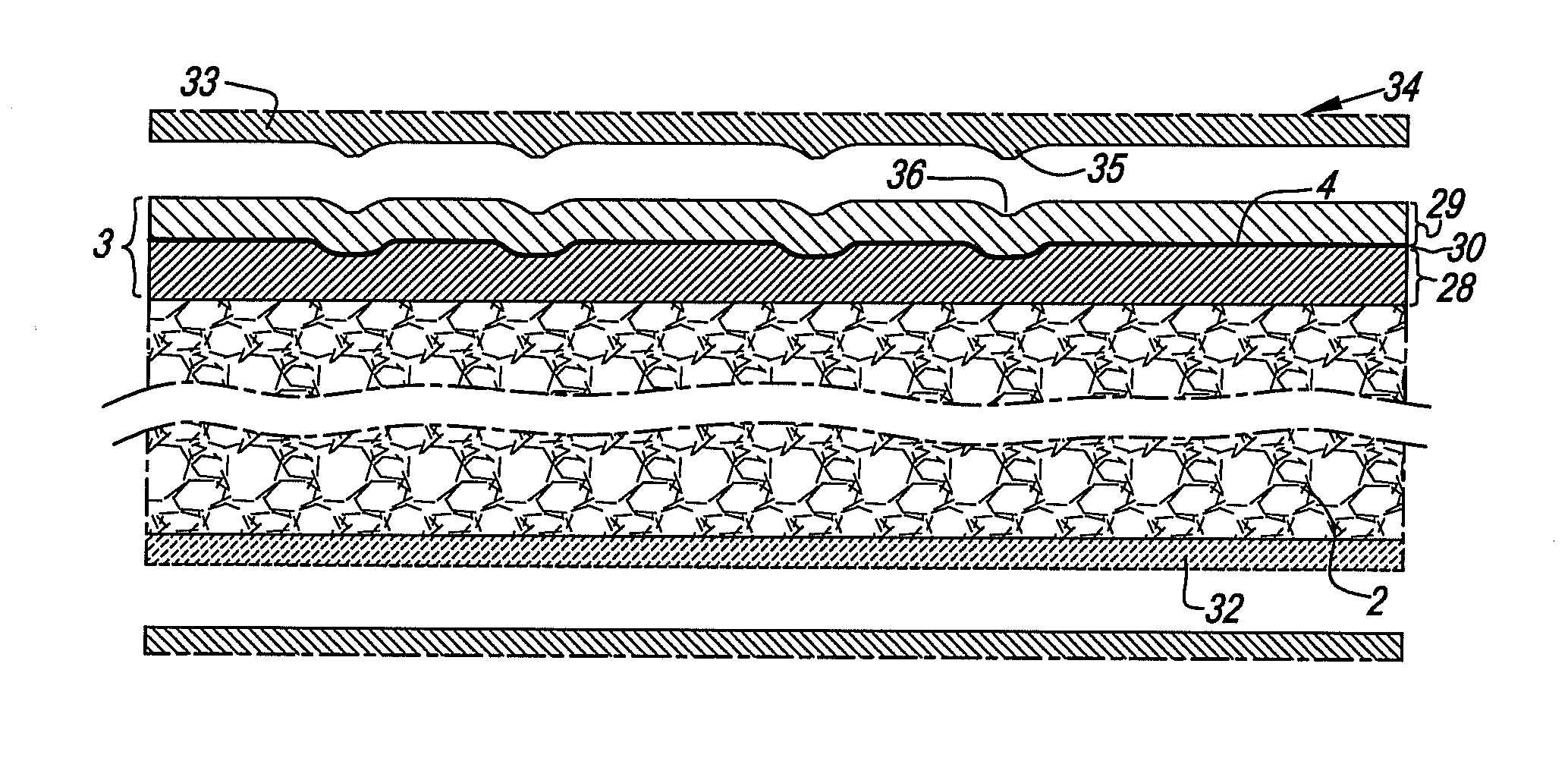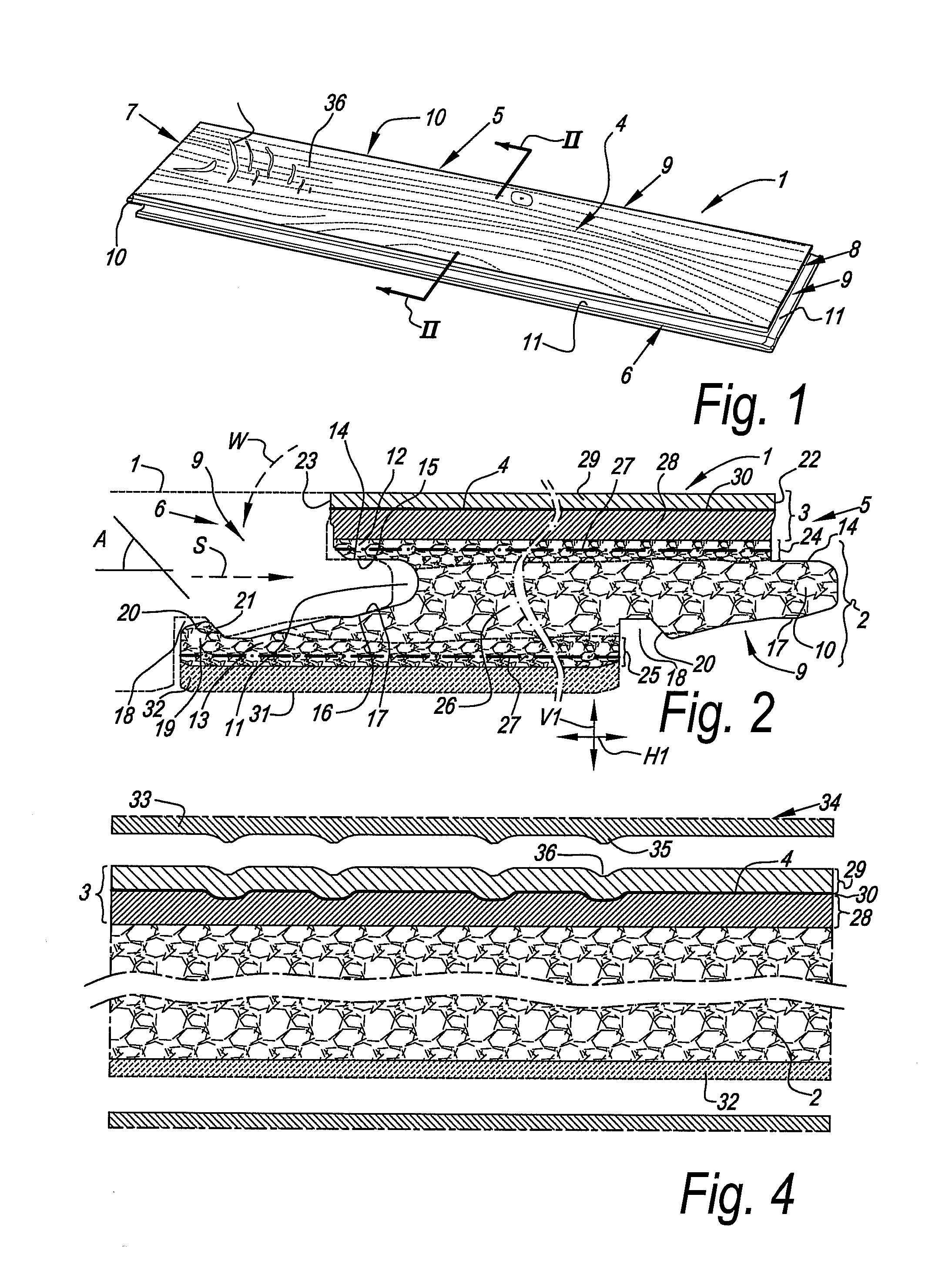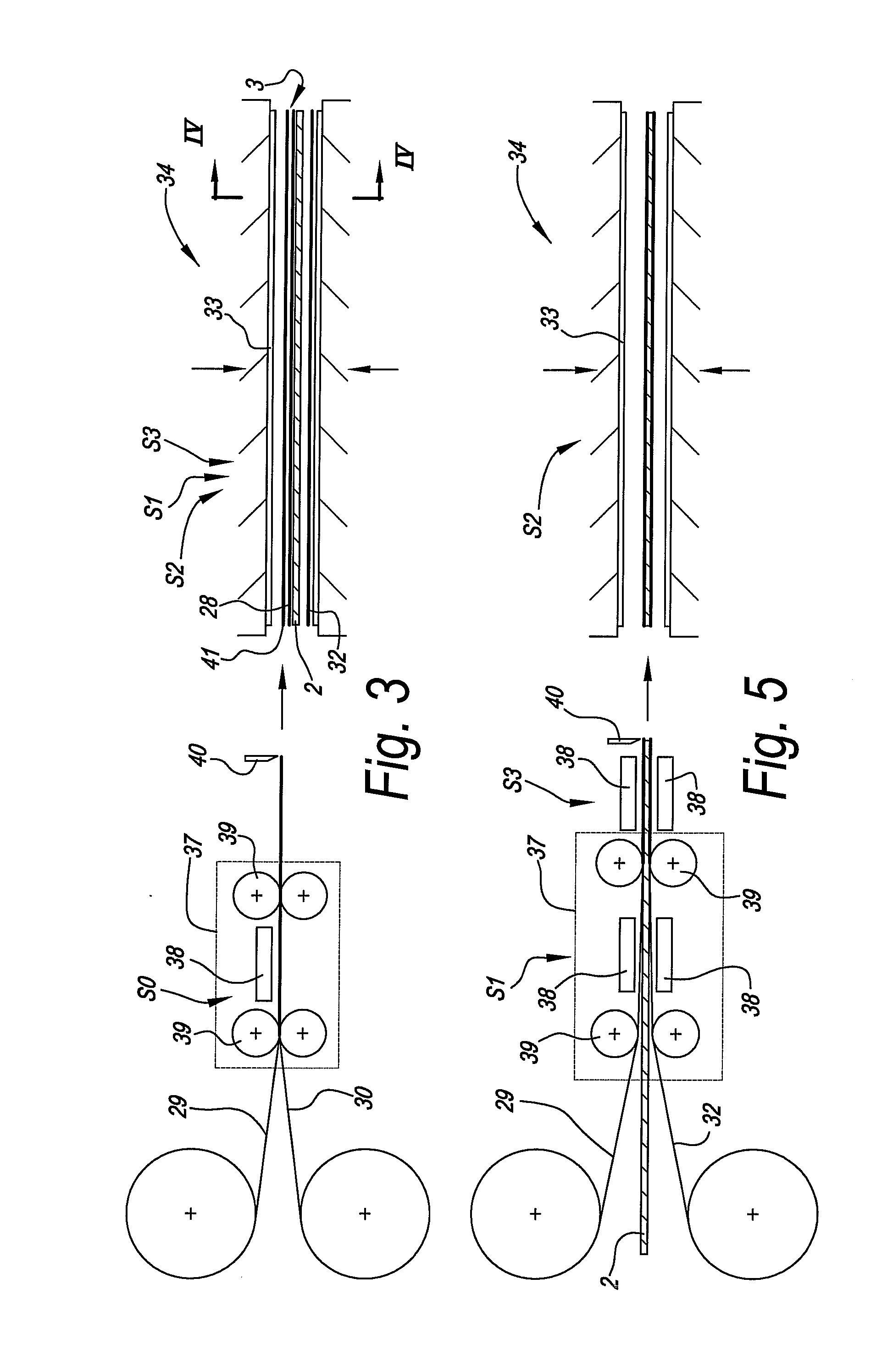Floor panel and methods for manufacturing floor panels
a technology of floor panels and dimensional stiffness, applied in the field of floor panels, can solve the problems of high impact sensitivity, limited bending stiffness and deformation, and development of ticking noise, and achieve the effect of reducing the risk of permanent impression, reducing the density, and sufficient dimensional stiffness
- Summary
- Abstract
- Description
- Claims
- Application Information
AI Technical Summary
Benefits of technology
Problems solved by technology
Method used
Image
Examples
Embodiment Construction
[0060]FIG. 1 represents a floor panel 1 for forming a floating floor covering.
[0061]FIG. 2 clearly shows that the floor panel 1 is of the type which comprises at least a substrate 2 and a top layer 3 provided on this substrate 2, wherein the top layer 3 comprises a motif 4, in this case a wood motif.
[0062]In the example of FIGS. 1 and 2, this relates to a rectangular floor panel 1, which, at the first pair 5-6 as well as at the second pair 7-8 of opposite edges, is provided with mechanical coupling means 9.
[0063]FIG. 2 represents that the coupling means 9 at the first pair 5-6 of opposite edges, namely, the long edges of the floor panel 1, substantially are performed as a tongue 10, a groove 11, respectively. Herein, the groove 11 is flanked by an upper lip 12 and a lower lip 13. When two of such floor panels 1 are coupled to each other at these edges 5-6, the cooperation of the tongue 10 and the groove 11 as such leads to a locking in a vertical direction V1 perpendicular to the pl...
PUM
| Property | Measurement | Unit |
|---|---|---|
| thickness | aaaaa | aaaaa |
| thickness | aaaaa | aaaaa |
| thickness | aaaaa | aaaaa |
Abstract
Description
Claims
Application Information
 Login to View More
Login to View More - R&D
- Intellectual Property
- Life Sciences
- Materials
- Tech Scout
- Unparalleled Data Quality
- Higher Quality Content
- 60% Fewer Hallucinations
Browse by: Latest US Patents, China's latest patents, Technical Efficacy Thesaurus, Application Domain, Technology Topic, Popular Technical Reports.
© 2025 PatSnap. All rights reserved.Legal|Privacy policy|Modern Slavery Act Transparency Statement|Sitemap|About US| Contact US: help@patsnap.com



